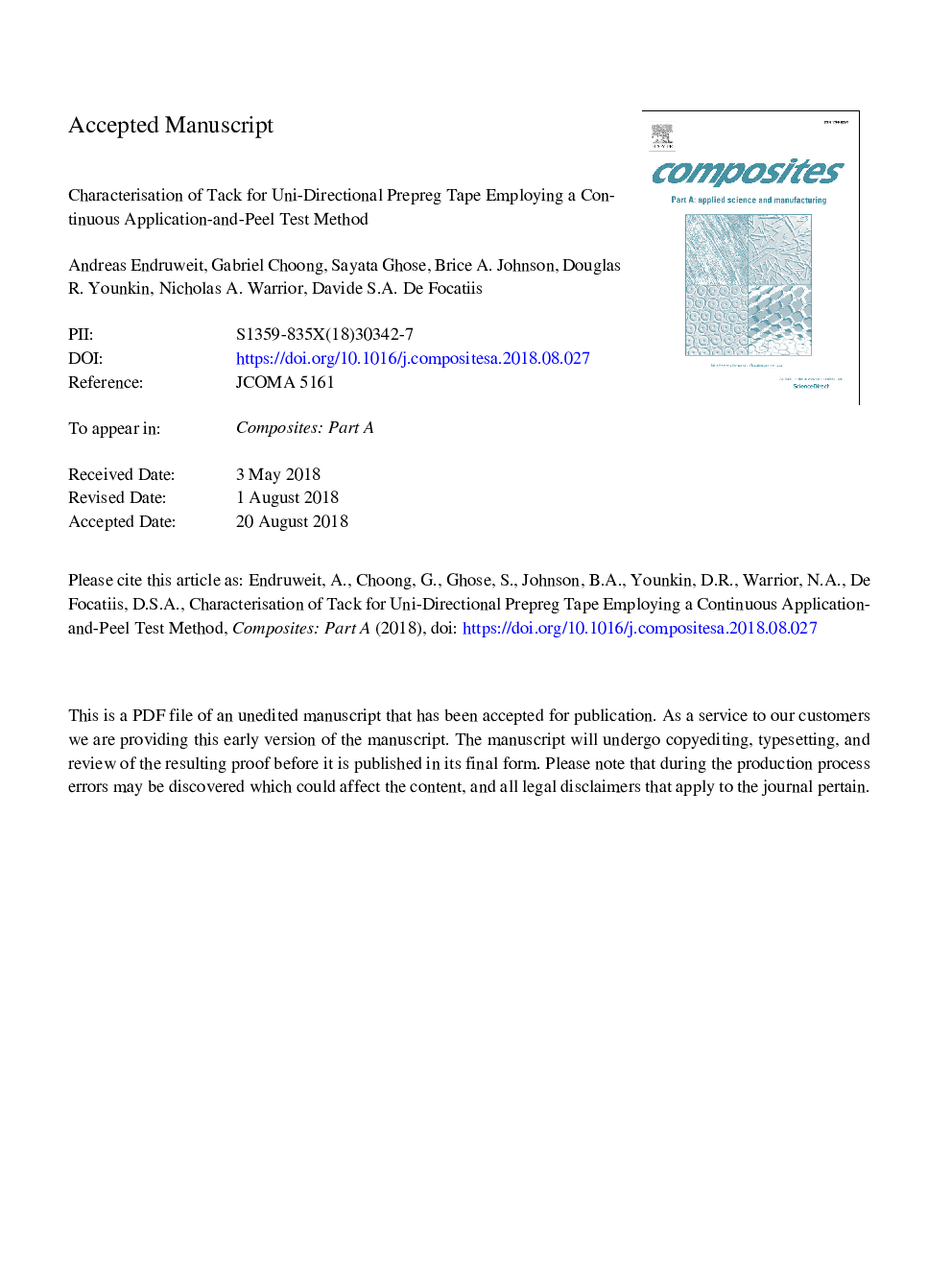| Article ID | Journal | Published Year | Pages | File Type |
|---|---|---|---|---|
| 10128351 | Composites Part A: Applied Science and Manufacturing | 2018 | 34 Pages |
Abstract
Employing a test method with coupled application and peel phases, tack was characterised for a UD prepreg tape. Different aspects of tack were explored by varying test parameters and material condition. In addition, different surface combinations were studied. In general, the test parameters, feed rate and temperature, affect the balance between cohesion within the resin and adhesion between resin and substrate. Exploring a range of parameters is required to understand the effect of viscoelastic resin properties on tack. The application pressure determines the true contact area between prepreg and substrate and hence affects tack. Changes in molecular mobility in the resin related to specimen conditioning, i.e. ageing or moisture uptake, result in maximum tack to occur at lower or higher feed rates, respectively. Differences in tack for different material combinations can be attributed to different molecular interactions at the contact interfaces and different resin distributions on the prepreg surfaces.
Keywords
Related Topics
Physical Sciences and Engineering
Materials Science
Ceramics and Composites
Authors
Andreas Endruweit, Gabriel Y.H. Choong, Sayata Ghose, Brice A. Johnson, Douglas R. Younkin, Nicholas A. Warrior, Davide S.A. De Focatiis,
